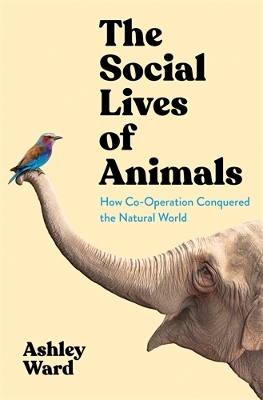
'Any writer who can evoke the existential sadness of a lonely cockroach, or make krill thrilling, or describe a snorkelling colleague being engulfed in a "gargantuan cetacean bum detonation" is a real gift to science communication ... thought-provoking' Guardian
Everything you ever wanted to know about how animals live together, and what that means for us
Some animal societies hold a mirror up to the human world: elephants hold funerals for departed family members. Pinyon jays run collective creches. Rats will go out of their way to help a cold, wet stranger. Other lifestyles can seem intensely alien. Take locusts, surging over the land in their millions, unable to slow down for a moment because the hungry ranks behind will literally bite their legs off if they don't stay one step ahead (actually, you might know a few people like that).
But no matter how offputting an animal might be, behavioural scientist Ashley Ward can usually find something worth celebrating. Travelling the world from the Serengeti to the frozen Antarctic ocean, with stops in the muddy fields and streams of his native northern Yorkshire, he brings his curious eye and infectious humour right down to their level. The result is a world-expanding, myth-busting tour of some of nature's greatest marvels, in delightfully broad-minded company.
Wild Romp. This is a book that takes us on a wild adventure across the planet as we see the societies various animals have built, from the smallest Antarctic krill to the large Orcas and Humpback whales to the largest land animals out there - the African Elephant. Fascinating in breadth (though with a dearth of bibliography, as the Advance copy I read only contained about 9% bibliography compared to 3x that amount being more typical, even in early copies) and often hilarious in approach, this is a book that lovers of any animal great or small are going to want to check out. Though I *would* be careful with younger readers (and apparently there is a children's edition already being planned), as the primate chapter in particular gets a bit salacious. Apparently you can't talk about baboon social life without talking about just how promiscuous - and "pansexual", to put a human label on it - they are. Other than that particular section though, most anything here is about the same as anyone will hear on TV / at work / at school as far as "bad" language goes. Truly a fun tale that never gets too academic and yet manages to present quite a few (presumed, see note about bibliography above) facts that are likely new to most readers. Very much recommended.
Reading updates
-
Started reading
-
25 February, 2022:
Finished reading
-
25 February, 2022:
Reviewed
